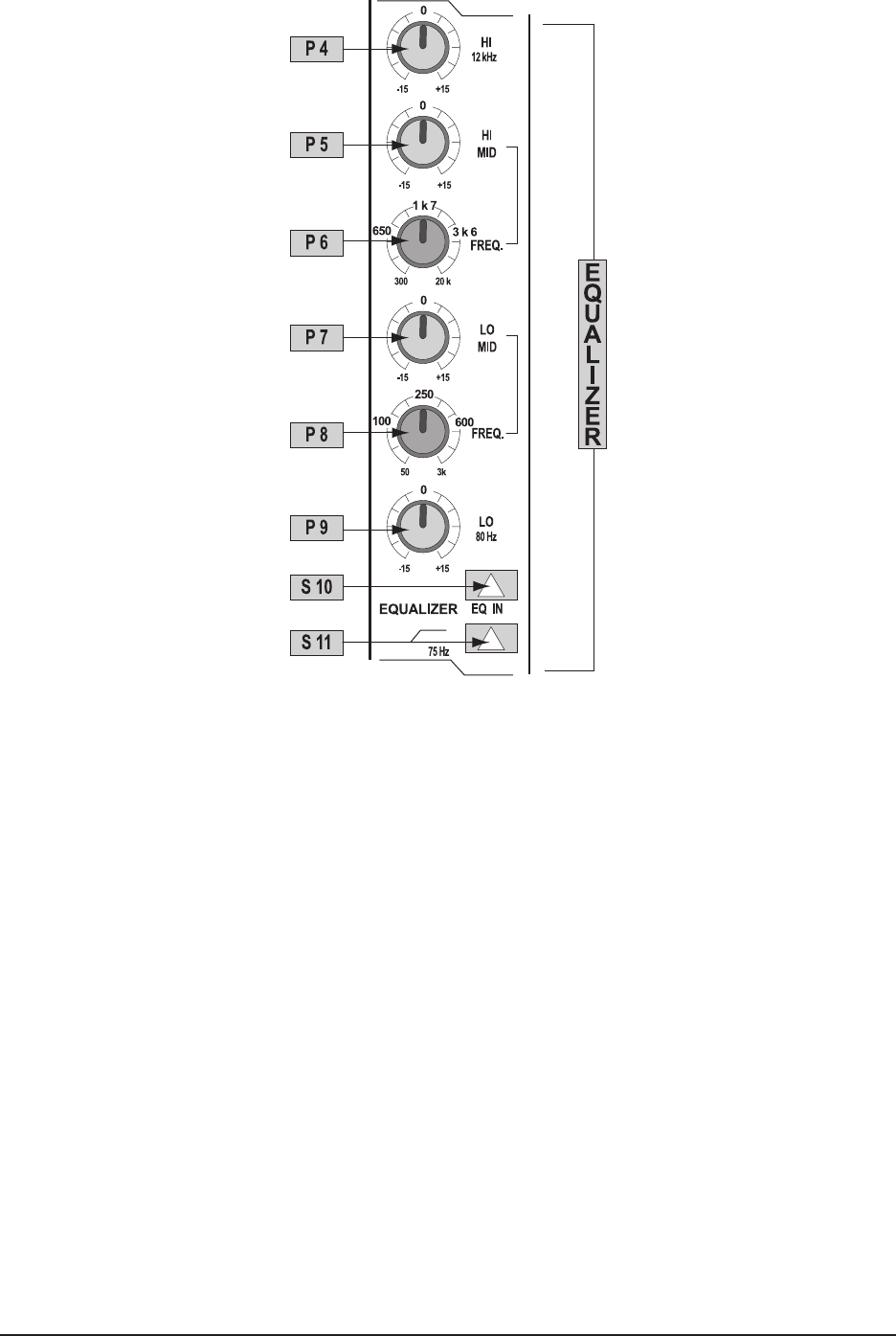
10
3.4 Main equalizer
Fig. 3.3: Main equalizer
The main equalizer can be switched (S10) out of circuit for easy A/B comparisons between EQed and straight
signals, or when you know that you dont want to use desk EQ at all. It is best considered in three sections.
First, there are two Baxendall shelving frequency controls for treble and bass, at 12 kHz and 80 Hz respectively
(P4 and P9). These are DUPLICATED for the B-channel (P18 and P19), not merely SPLIT off from the main
EQ. I.e. you can have a full 4-band EQ on the main channel AND a 2-band EQ on B-channel.
Secondly, there are two semi-parametric swept mids, Q fixed at 1, which cover the bands 300 Hz to 20 kHz
and 50 Hz to 3 kHz. An unusually broad frequency range is catered for, and there is an enormous 3-plus
octave overlap between the two mid bands (P5, P6, P7 and P8). No experienced engineer will complain about
that! All four bands offer 15 dB of cut and boost.
Thirdly, there is a steep high pass (low cut) filter (S11), slope @ 12 dB/octave, -3 dB @ 75 Hz, for reducing floor
rumble, plosives, woolly bottom end, etc.
3.5 Aux sends
All six aux sends are mono and post EQ. They are switchable PRE/POST fader in two banks (S13 and S16).
For aux sends 1 and 2, two dedicated pots (P12 and P13) are used. These can be taken from a point before
or after the channel fader, i.e. PRE or POST (S13). Aux sends 3 and 4, and 5 and 6 are serviced by two
potentiometers (P14 and P15). The SHIFT button (S15) determines whether buses 3 and 4 or 5 and 6 are
addressed. Also, these four sends can be derived from the main mix or MIX-B, depending on SOURCE
(S17), and, as before, can be pre or post (S16).


















